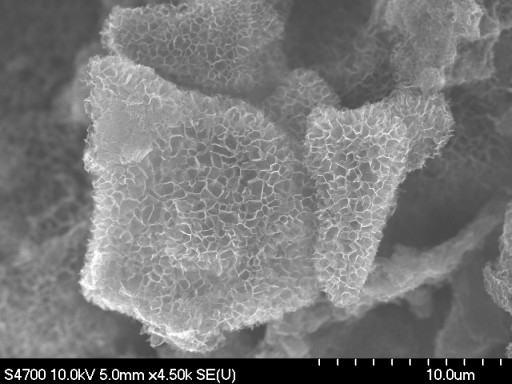3D graphene could replace expensive platinum in solar cells
August 22, 2013

A field emission scanning electron microscopy (FESEM) image of 3D honeycomb-structured graphene. (Credit: Hui Wang/Michigan Technological University)
Michigan Technological University, scientists have replaced expensive ($1,500 an ounce) platinum in solar cells with low-cost 3D graphene.
Regular graphene is a two-dimensional form of carbon. Yun Hang Hu, the Charles and Caroll McArthur Professor of Materials Science and Engineering at MTU, and his team invented a way to synthesize a 3D version, with a honeycomb-like structure.
The 3D graphene had excellent conductivity and high catalytic activity, raising the possibility that it could be used for energy storage and conversion.
In tests, a counter electrode made from 3D graphene converted 7.8 percent of the sun’s energy into electricity, nearly as much as a conventional solar cell using costly platinum (8 percent).
Synthesizing the 3D honeycomb graphene is neither expensive nor difficult, said Hu, and making it into an electrode posed no special challenges.
The research has been funded by the American Chemical Society Petroleum Research Fund and the National Science Foundation

How to create 3D graphene: combine lithium oxide with carbon monoxide, forming lithium carbonate (Li2CO3) and the honeycomb graphene. The Li2CO3 helps shape the graphene sheets and isolates them from each other, preventing the formation of 2D graphite (the Li2CO3 particles can be easily removed from 3D honeycomb-structured graphene by an acid). (Credit: H. Wang/Angewandte Chemie)